Calendula – planting, growing and harvesting
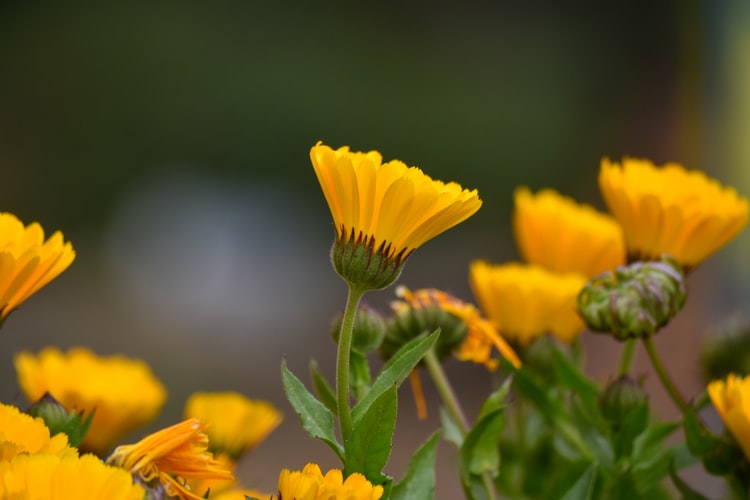
Calendula (Calendula officinalis) is an annual plant and belongs to the Asteraceae family. Calendula originates in the Mediterranean area and western Asia, spreading rapidly throughout Europe.
Use
Calendula is used as an infusion to treat various ailments such as ulcers and gastritis, and liver and biliary diseases. Calendula are also used to treat various wounds, insect bites, burns, acne, and eczema.
For medicinal purposes, ligulate flowers or inflorescences are used. Calendula can also be grown for ornamental purposes.
Botanical characteristics
The taproot is long and can reach a depth of up to 20 cm. The stem is straight, and branched, reaching a height of 40-80 cm. The leaves are arranged alternately on the stem, have no petiole, and may or may not have hairs on their surface. They have a lanceolate shape, the tip is rounded and can be up to 16 cm in size.
The inflorescence is represented by the calathidium, on which the orange ligulate flowers are attached laterally. The flowers in the middle are tubular, yellow-orange. The fruits are represented by achenes (fruit whose seed is covered by a hard shell).
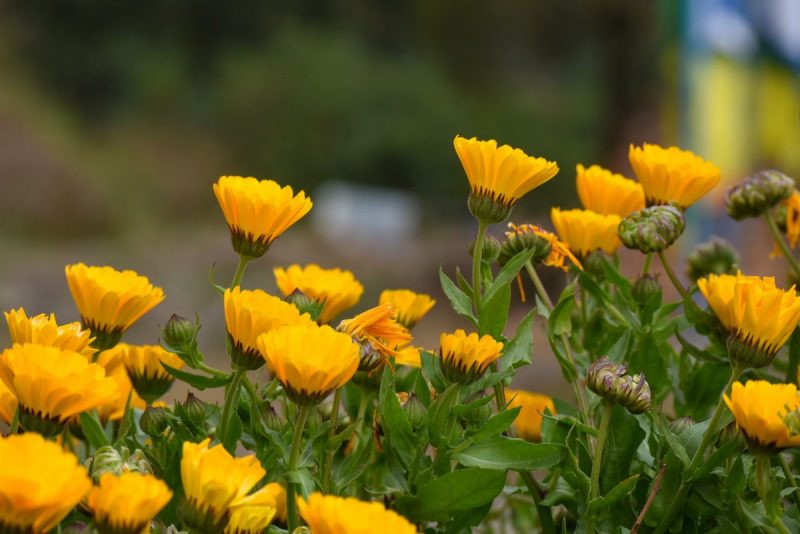
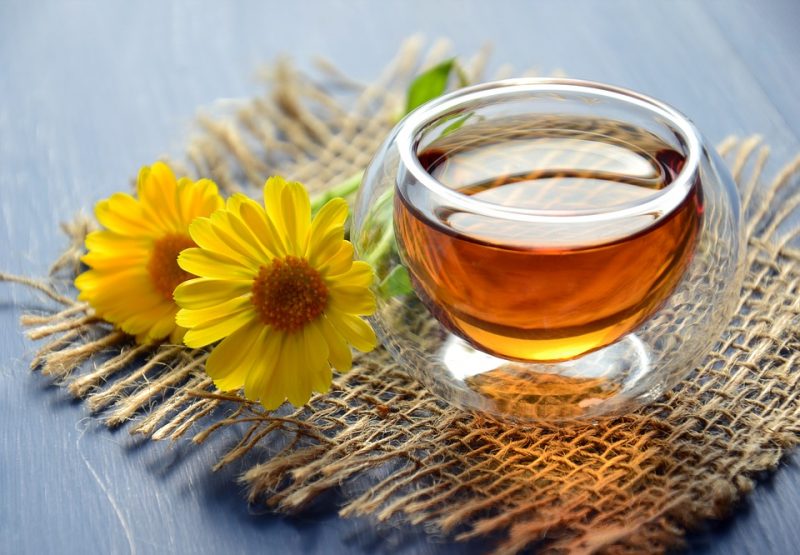
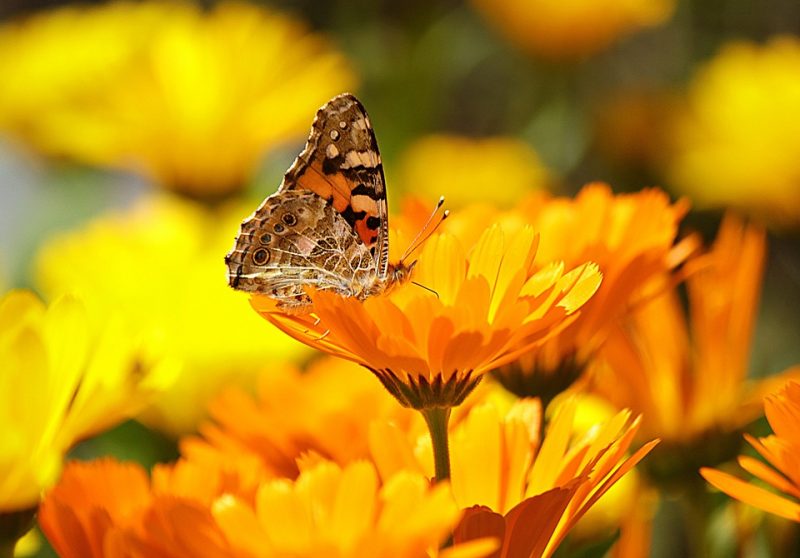
Environmental requirements
Temperature. Calendula does not have high demands in terms of temperature. The optimum seed germination temperature is 15-20º C. They can also germinate at lower temperatures. The seeds germinate within 10-14 days. For growth and flowering, the optimum temperature varies between 16-25º C. They do not tolerate temperatures above 30º C.
Light. Calendula has moderate light requirements. It grows and develops in sunny, airy places. A bright area helps it bloom.
Humidity. Plants have moderate humidity requirements. The soil must be damp. During dry periods, on soils poorly supplied with water, irrigation is recommended.
Soil. It prefers fertile, loose, moist, well-drained soils. In terms of pH, it should be between 5.5-7.
Cultivation
Crop Rotation. Calendula does not have high requirements regarding the preceding plant. The best results are obtained after crops that leave the land loose and free of weeds. It is advisable to avoid monocultures. The cultivation of calendula can be done in the same field after 4-5 years.
Fertilizing. Calendula reacts favourably to the application of mineral fertilizers. Nitrogen fertilizers can be applied in spring. Phosphorus and potassium fertilizers can be applied in the fall, simultaneously with ploughing.
Preparing the land. As soon as the preceding plant has been harvested, a ploughing is performed at a depth of 22-15 cm. The soil is worked with the disc 1-2 times, keeping the soil clean and loose until sowing.
In spring, the seedbed has to be prepared with the combine.
Propagation. Calendulas are propagated through seeds.
Recommended products
-
You can find products on a different store
Change Store -
You can find products on a different store
Change Store -
You can find products on a different store
Change Store -
You can find products on a different store
Change Store -
You can find products on a different store
Change Store -
You can find products on a different store
Change Store -
You can find products on a different store
Change Store -
You can find products on a different store
Change Store -
You can find products on a different store
Change Store -
You can find products on a different store
Change Store -
You can find products on a different store
Change Store -
You can find products on a different store
Change Store -
You can find products on a different store
Change Store -
You can find products on a different store
Change Store -
You can find products on a different store
Change Store -
You can find products on a different store
Change Store -
You can find products on a different store
Change Store -
You can find products on a different store
Change Store -
You can find products on a different store
Change Store -
You can find products on a different store
Change Store -
You can find products on a different store
Change Store -
You can find products on a different store
Change Store -
You can find products on a different store
Change Store -
You can find products on a different store
Change Store
Sowing season. It has to be sown in spring, or in March, depending on the environmental and soil conditions.
Distance and depth of sowing. The distance between the rows is 50 cm, and the seed depth is 2-3 cm. If the surface is small, it can be sown in nests (2-3 seeds per nest). The distance between rows is 50 cm and 20 cm between nests per row.
Sowing norm. It is 6-8 kg/ha, depending on the quality indicators of the seed and the degree of soil preparation. The seeds must meet the quality parameters: physical purity 95-85%, and germination 85-70%.
Care
The appearance of weeds as soon as the plants have sprouted has an unfavourable effect on plant development. During the vegetative growth period, it is recommended to remove weeds 2-3 times and to break the crust formed on the soil surface. Mechanical hoeing can be carried out between rows and weeding works on the rows.
Selective herbicides for Calendula cultivation can also be used to control weeds.
Diseases and pests
The plants are susceptible to powdery mildew, this being a common disease in Calendula cultivation. Uncommon diseases are bacterial leaf spots and grey leaf spots.
Diseases can be prevented by maintaining proper cultural hygiene.
No pests have been reported during the vegetative growth period that would significantly reduce the production or quality of the raw material.
Harvesting
Harvest time. They are harvested when the first rows of ligulate flowers open. Pot calendulas can be harvested from June to October. The seeds are harvested at maturity when they turn brown.
Harvesting methods. The capitulum and ligulate flowers have to be harvested by hand. For inflorescences development, it is recommended to harvest regularly, every 2-3 days, then less often.
In the case of crops intended for the production of propagating material, the plants can be harvested with a sickle or with the help of a combine.
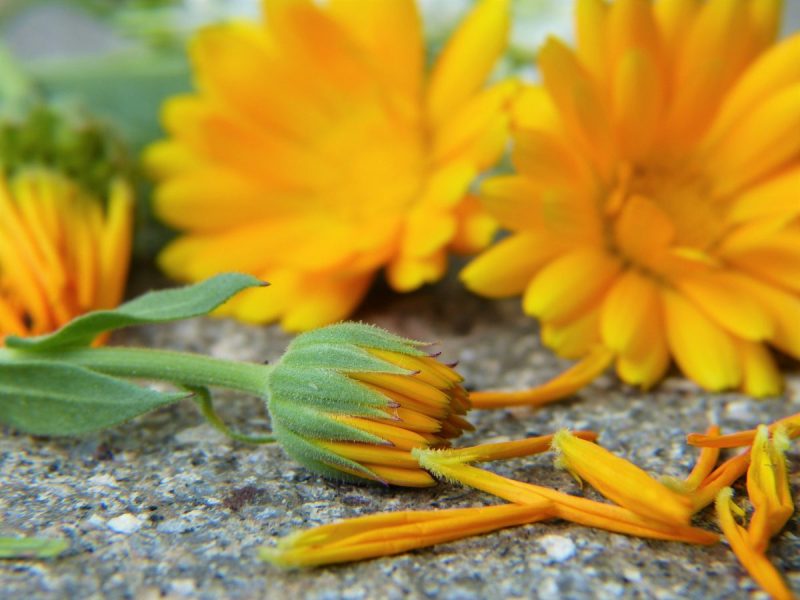
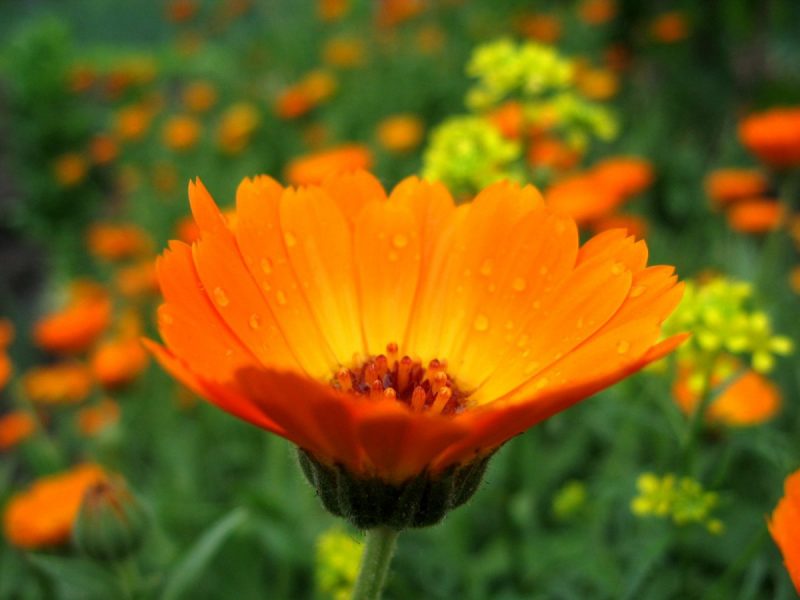
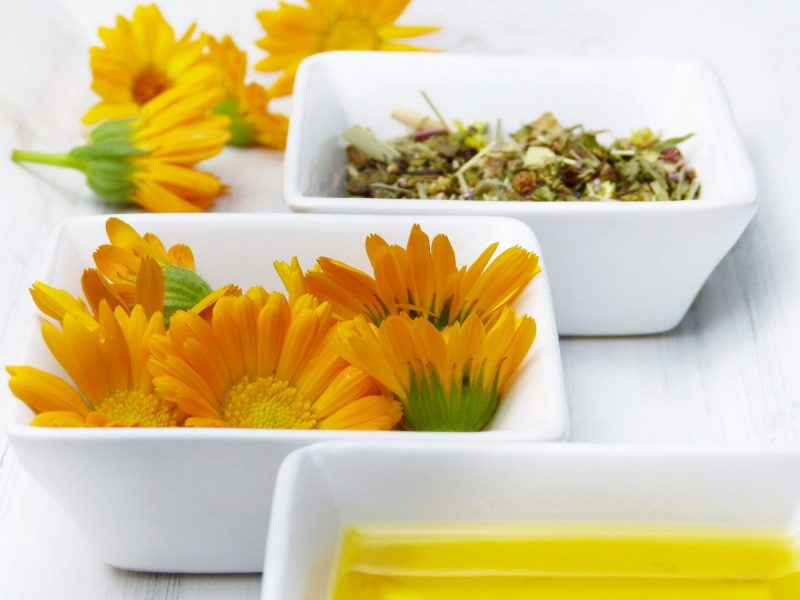
Processing the raw material
Drying. Immediately after harvest, the ligulate flowers and inflorescences have to be transported to the drying site. It is recommended to dry them in shaded places so that their color does not fade. This should be done in airy and clean rooms. The flowers must be placed in thin layers, on sieves or on paper. Proper drying is necessary to maintain the natural color.
Packing and storage. The dried plants are gathered and packed in boxes, lined with paper. They must be kept in the dark and dry rooms.















































































































































































































































































































































































































































